Research Article Open Access
Biodegradation of Coir Geotextiles Attached Media in Aerobic Biological Wastewater Treatment
| Gopan Mukkulath* and Santosh G. Thampi | |
| Department of civil engineering, National Institute of Technology Calicut, Calicut-673 601, Kerala, India | |
| Corresponding Author : | Gopan Mukkulath Department of civil engineering National Institute of Technology Calicut, India Tel: +919961332121 Fax: +914952287250 E-mail: gopan@nitc.ac.in |
| Received July 17, 2012; Accepted September 22, 2012; Published September 24, 2012 | |
| Citation: Mukkulath G, Thampi SG (2012) Biodegradation of Coir Geotextiles Attached Media in Aerobic Biological Wastewater Treatment. J Bioremed Biodeg 3:166. doi: 10.4172/2155-6199.1000166 | |
| Copyright: © 2012 Mukkulath G, et al. This is an open-a ccess article distributed under the terms of the Creative Commons Attribution License, which permits unrestricted use, distribution, and reproduction in any medium, provided the original author and source are credited. | |
Related article at Pubmed Pubmed  Scholar Google Scholar Google |
|
Visit for more related articles at Journal of Bioremediation & Biodegradation
Abstract
Coir is a hard and tough organic fibre, rich in cellulose and lignin, and possesses high specific area and wetting
ability - factors which are important for bacterial adhesion in fixed film processes. Few studies have been reported on the durability of coir geotextiles, when used in Civil Engineering applications such as slope protection works. However, its durability when used as the media in biofilters, for wastewater treatment extensively has not been studied yet. Durability of coir geotextiles has been assessed by keeping it in wet condition and measuring the tensile strength of the fibres, at different times. In the present study, coir geotextiles that were used as the attachment media in a biofilter, for treatment of organic rich wastewater was tested for durability. The units were operated as aerobic, gravity flow filters. Different wastewater parameters were employed in each of these runs. Tensile strength of the fibres was determined after each run.
| Keywords |
| Biofilters; Coir geotextiles; Permittivity; Tensile strength |
| Introduction |
| Coir fibre contains more lignin than all other natural fibres, such as jute, flax, linen, cotton etc. It has a lignin content of 45.84%, which makes it as the strongest of all known natural fibres. As other natural fibres like jute, sisal etc. has much less lignin content, they are degraded faster than coir. Studies conducted under similar environments, jute geotextile is degraded within one year whereas a coir geotextile degraded after 8-10 years for slope protection works [1].The feasibility of using of coir geotextiles, made out of natural material, as the medium in filters for treatment of wastewater has not been studied extensively yet. Filters employing coir geotextile media exhibit high organic and nutrient removal rates, compared to filters using plastic or sand as the medium [2]. The major drawback of using coir geotextiles media in biofilters may be its degradation and subsequent clogging of the filter. Media degradation may be attributed to microorganisms feeding on it, rather than on the substrates in the effluent wastewater [3]. |
| Subaida has conducted experimental studies on tensile strength and pull out studies on various types of coir geotextiles. Reported works pertaining to the durability of coir geotextiles are limited in number. Schurholz [4] found that coir geotextlies retained 20% of their original tensile strength, after one year in incubator tests with highly fertile soil. It was also observed that coir geotextiles exhibited no damage, even after being put in a shower room and kept wet for 167 days in conditions to simulate flooding. Sarsby et al. [5], reported about 20% strength reduction of coir ropes embedded in a soil with pH 8.7 after 10 months. Reduction in strength of the coir ropes was attributed to the alkaline environment, rather than the moisture present in the soil. Rao and Balan [6], conducted studies using coir yarns of retted and unretted types embedded in different soil media, and water at a temperature of 30 ± 1°C and a relative humidity of 90 ± 1 %. The study showed that major strength loss takes place in 4 to 8 months. The loss of strength is more for sand with some organic content, compared to clay with high organic content owing to less organic content in sand. In the present study, tests were conducted on coir geotextiles that were used as the attachment media in a biofilter for treatment of organic rich wastewater, to assess its durability. |
| Materials and Methods |
| Geotextiles are relatively thick planar sheets which may be woven, non-woven or knitted. These are capable of transmitting fluids across or in-plane or in both ways, and retain suspended particles. Woven geotextiles are manufactured by interlacing yarns, usually at right angles, whereas non-woven geotextiles are made by mechanical, heat or chemical bonding of directional or randomly oriented yarns [1]. The coir geotextiles used for the study is supplied from Central Coir Research Institute in Alleppey, Kerala India. Salient properties of commonly used coir geotextiles are listed (table 1). Coir mesh matting of different mesh sizes is most established coir geotextiles. Mesh matting having different specifications is available under quality code numbers H2M1 to H2M10. These qualities represent coir textiles of different mesh sizes ranging from “1/8 to 1”. Another classification is based on the place of manufacture. For example: MMA1 stands for Mesh Matting Anjengo Grade 1. Woven coir geotextiles (H2M2) was used as the media in the experimental setup, and these were later subjected to tests for assessing its durability. |
| The experimental setup of the biofilter was made of a PVC pipe of diameter 20cm and length 90cm, with the coir geotextile media packed inside; the packing density is estimated at 71.13 kg/m3 and porosity is 84.4%. Wastewater prepared in the laboratory was used, so that the influent characteristics would remain constant throughout the filter operation [7,8]. The filter was operated as an aerobic, down flow filter with continuous flow operating conditions. Six runs of duration 50 ± 5 days were performed with organic rich wastewaters having different characteristics, maintaining a constant hydraulic loading rate of 200 l/ m2/day [9]. |
| Bacterial pure culture for Fecal Coliforms was prepared in the laboratory. Commercially available M 7 hr FC Agar was used for the preparation of the media for fecal coliforms. A biological contaminated water sample was inoculated with the prepared media, for initiation of bacteriological growth. The fecal coliform media was kept for incubation for 7-9 hrs at 41.5°C. Fecal Coliforms appeared as bright yellow colonies. After incubation, the colonies developed on the media were transferred using nickel alloy wire loops, and they were cultured again for the development of pure culture. These pure cultures are preserved in nutrient agar slants. The pure culture stored in nutrient agar media is streaked into the broth media. This media is incubated for the development of biological organisms. After incubation, these organisms were transferred to the filter media using nickel alloy wire loops and kept for 15 days, for maximum biological organism growth [10]. |
| Tensile strength |
| The tensile strength of the coir geotextiles used in the biofilter was determined, following the procedure outlined IS: 13162 (Part 5) [11] and ASTM D 4595 [12]. This standard IS: 13162 (Part 5) [11] prescribes an index test method for determination of the tensile properties of geotextiles and related products, using a wide width strip. A test specimen is held across its entire width, in the jaws of a tensile testing machine operated at a given rate of strain, applying a longitudinal force to the test specimen until the specimen ruptures. The tensile properties of the test specimen are calculated from machine scales, dials, autographic recording charts, or an interfaced computer. A Constant Rate of Extension (CRE) tensile testing machine, as specified in IS 1969 [13] was used. Jaws were sufficiently wide to hold the entire width of the specimen, and with appropriate means to limit slippage or damage. Compressive grips were used for the gripping of coir geotextiles. |
| The test specimen was 200mm in width, which contained at least 5 nos of selected Coir woven Geotextile elements with the width, and at least one row of the nodes or cross-members excluding the nodes or cross-members by which the test specimen was held in the jaws (Figure 1). The preload of 1% of the maximum load or 350 N (whichever is less) is prescribed for extension at preload. The test specimen is 200mm wide with at least 5 complete tensile elements; the gauge length is 20cm. Strain was applied at a rate of 20 ± 5% per minute. The tensile strength of coir geotextiles is calculated by the formula given by Eq. (1) |
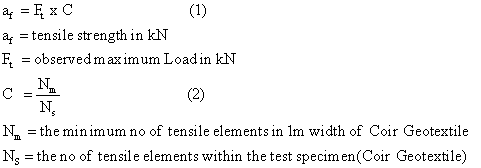 |
| Permeability |
| Permeability, k of Geotextiles indicates the rate at which the flow of liquid occurs under a differential pressure. Permittivity, Φ is the term used to denote volumetric flow rate of water in the normal direction per unit cross-sectional area and per unit head difference. The relationship between permeability and permittivity can be expressed as (Eq. 3) [14]. |
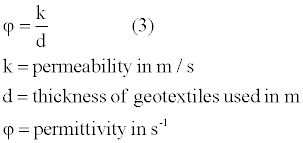 |
| Permeability tests were carried out using a constant head permeameter. The specimens were as specified in IS: 14324-1995 [14] with a diameter of 73 mm; a constant head of 50cm was maintained. The quantity of flow was measured versus time. The constant head test was used when the flow rate of water through the geotextile is so large that it is difficult to obtain readings of head change versus time, in the falling head test. Specified stress was applied on the fabric. Flow per unit area was recorded and permittivity was calculated using the following Eqs. (3) and Eqs. (4) [14]. |
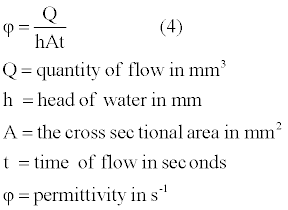 |
| Results and Discussion |
| Tensile strength |
| The stress-strain curve obtained is presented (Figure 2). From the tensile strength values obtained for the six types of wastewaters (expressed in terms of the COD values), the percentage reduction in tensile strength is determined. Results are presented in Table 2 and Figure 3. |
| The strength of the fibre is characterized by the observed maximum load, beyond which will cause coir fibre to break. The observed maximum load decreases with increase in COD values of the influent to the filters. The reduction in observed maximum load with higher organic content in the influent shows the loss of strength in fibres. The slope of the stress -strain curve for the geotextiles shows a descending trend, with increase in COD values. The percentage reduction in strength increases with the increase in organic content of the influent. The influent organics causes an increase in microbial population, as per Monods Kinetics; increase in microbial concentration depends upon the influent substrate concentration, these microbes feeds on these media which results degradation. Subsequently the fibres become brittle, leading to lower tensile strength. |
| The pH value of the influent is different in the six runs, and hence it can most likely that it also influences the tensile strength. The study shows that the degradation or reduction in tensile strength of the coir geotextiles was at minimum for the range 6.5- 8.0. The deviation from the neutral ranges makes the influent acidic/ alkaline, which also makes fibres of the coir geotextiles brittle, which leads to reduction in tensile strength [15]. |
| Permeability tests |
| As evident from the Permittivity vs. COD curve (Figure 4) the reduction in permittivity, with respect to influent COD values, shows a second order decay pattern. As in the case of tensile strength, the permittivity decreases with the increase in the organics content of the influent. The suspended solids in the influent gets trapped in the pores of the coir geotextiles; this decreases porosity, subsequently the permittivity through the coir geotextile media of the biofilter. Another reason for the decrease in permittivity is the increase in microbial population due to the higher substrate concentration of the influent to the biofilter [15]. |
| SEM studies |
| Scanning Electron Microscope (SEM) images of the fresh as well as used media were obtained, using SEM-Hitachi SU6600. The fractured fibres were closely observed under the Scanning Electron Microscope (SEM). |
| Direct evidence of fibre cracking and pore matrix degradation, during exposure to wastewater media was gathered using Scanning Electron Microscopy (SEM). (Figure 5, Figure 6). EDS (Energy Dispersive X-ray Spectroscopy) or EDAX analysis is a technique used for identifying the elemental composition of the specimen, or an area of interest thereof. The EDAX analysis system works as an integrated feature of a scanning electron microscope (SEM), and cannot operate on its own without the latter. EDAX analysis was conducted on fresh and used geotextiles. Studies show that there is significant reduction of about 42% in silicon content in used coir geotextiles, than the fresh coir geotextiles. As silicon is the component which imparts strength to the coir fibres,results from EDAX analysis show that there is considerable degradation of the fibres in the filter media. |
| Conclusion |
| This study on coir geotextiles media (coir geotextiles H2M2) degradation was primarily intended to obtain some insight into the influence of substrate concentration in the influent wastewater, to a biofilter on the attached media. From the results of this study, the following conclusions can be drawn. |
| 1. Fibres from the fresh and used media exhibit identical stress-strain behaviour. |
| 2. Reduction in tensile strength of coir geotextile media fibres increases with the substrate concentration in the influent wastewater. This could be because growth of microorganisms is influenced by availability of substrates. However, these microorganisms cause media degradation. |
| 3. Influent pH also influences the tensile strength of the coir geotextile media. |
| 4. Permittivity is also affected by the concentration of substrates in the influent. Suspended solids in the influent may be intercepted in the pores of the coir geotextile medium, thereby restricting flow of the influent through the filter. |
| 5. Images from a scanning electron microscope complemented by visual observations clearly show that the coir fibres shrink, and become brittle. Suspended solids adsorbed onto the surface of the coir fibres, can be seen in the SEM images. This reduces the medium permittivity. |
| Acknowledgements |
| The authors wish to express their deep sense of gratitude to the Kerala Sate Council for Science Technology and Environment (KSCSTE), for providing financial assistance under the Ecology and Environment Research Scheme to conduct this study. |
References
|
Tables and Figures at a glance
| Table 1 | Table 2 |
Figures at a glance
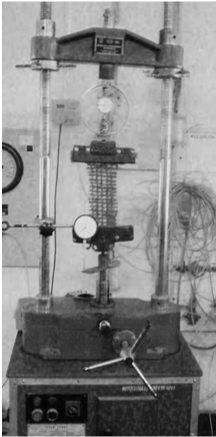 |
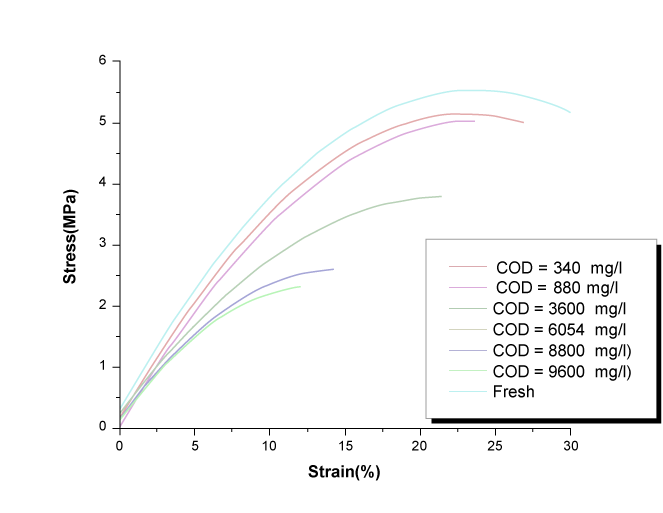 |
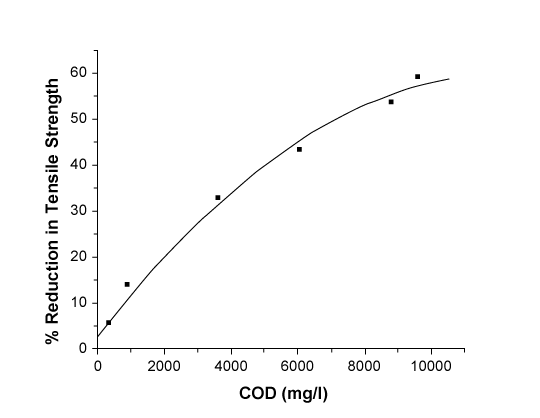 |
| Figure 1 | Figure 2 | Figure 3 |
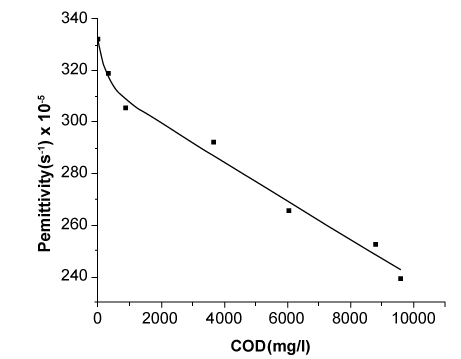 |
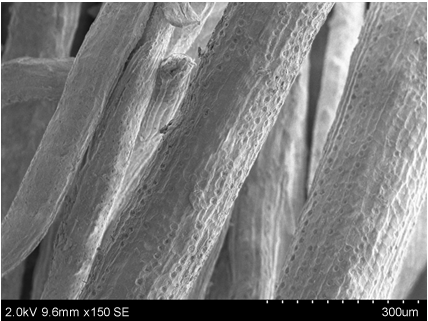 |
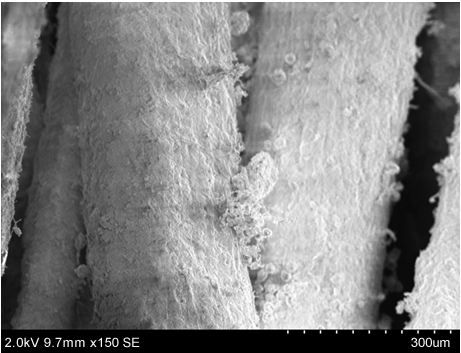 |
| Figure 4 | Figure 5 | Figure 6 |
Relevant Topics
- Anaerobic Biodegradation
- Biodegradable Balloons
- Biodegradable Confetti
- Biodegradable Diapers
- Biodegradable Plastics
- Biodegradable Sunscreen
- Biodegradation
- Bioremediation Bacteria
- Bioremediation Oil Spills
- Bioremediation Plants
- Bioremediation Products
- Ex Situ Bioremediation
- Heavy Metal Bioremediation
- In Situ Bioremediation
- Mycoremediation
- Non Biodegradable
- Phytoremediation
- Sewage Water Treatment
- Soil Bioremediation
- Types of Upwelling
- Waste Degredation
- Xenobiotics
Recommended Journals
Article Tools
Article Usage
- Total views: 15931
- [From(publication date):
November-2012 - Dec 07, 2025] - Breakdown by view type
- HTML page views : 11133
- PDF downloads : 4798
